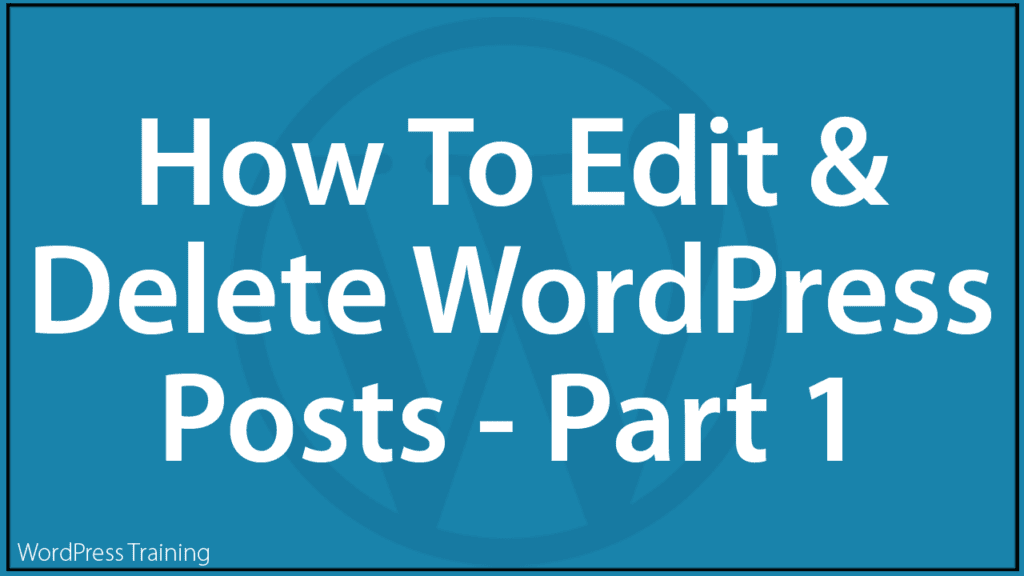How To Edit And Delete WordPress Posts – Part 1

In this tutorial, you will learn:
- How to edit and delete single and multiple posts in WordPress
- How to use the WordPress Table of Posts to perform bulk post edits and deletions.
- Useful and practical tips to help you save time editing your posts in WordPress.
Parts 1 and 2 of this tutorial cover the following topics:
- How To Use The WordPress Table Of Posts
- Screen Options
- Sorting And Filtering Options
- How To Edit Posts In WordPress
- How To Edit Single Posts In WordPress
- How To Edit Multiple Posts In WordPress (Bulk Editing)
- How To Delete Posts In WordPress
- How To Delete Single Posts In WordPress
- How To Delete Multiple Posts In WordPress (Bulk Deletion)
- Editing And Deleting Posts In WordPress – Additional Tips And Information
![]()
This tutorial uses the WordPress classic editor.
WordPress introduced a new content editor in version 5.0 called the Gutenberg or Block Editor.
To learn how to use the new editor, see this tutorial: The WordPress Gutenberg Editor
For other tutorials related to using posts in WordPress, go here:
- Differences Between WordPress Posts vs WordPress Pages
- How To Create A New Post In WordPress – Part 1
- How To Create A New Post In WordPress – Part 2
The WordPress Posts Screen
WordPress makes editing and deleting content in posts simple.
Editing posts is done in the Edit Post screen and there are several ways to delete posts in WordPress, which we will cover later in this tutorial.
To access the WordPress Posts section, log into your WordPress admin then go to the main navigation menu and select Posts > All Posts.
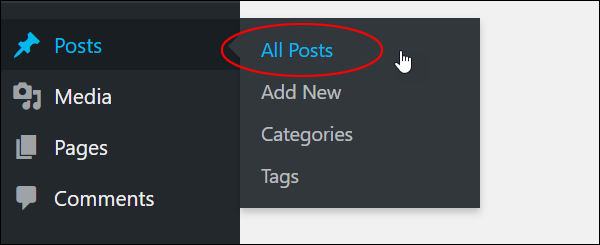
This brings up the Posts screen with the WordPress Table of Posts.
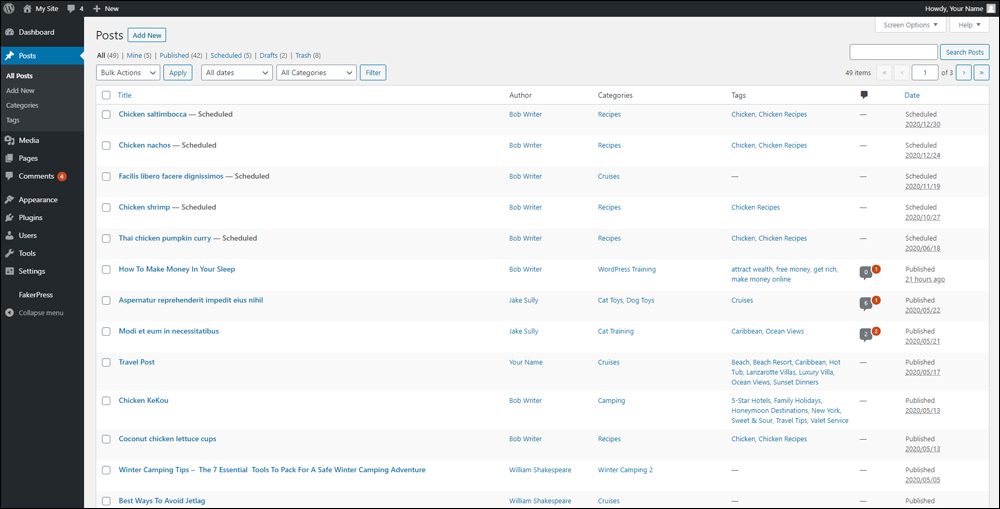
Here is where you can add, edit, and delete posts on your WordPress site.
We cover how to create posts in WordPress in step-by-step detail in a separate and comprehensive 2-part tutorial.
In this section, you will learn how to use the different features of the WordPress Table of Posts.
WordPress Table Of Posts – Post Management Features
The WordPress Table of Posts displays all the information you need to effectively manage your posts. These include:
- Your published posts
- Draft posts (posts that are not yet published)
- Scheduled Posts
- Private and password-protected posts
- Sticky posts
- Pending posts (posts that need to be approved by an administrator or editor before these can be published).
The Table of Posts displays a list of all your posts with the most recent posts listed at the top in reverse chronological order (i.e. most recent posts show up at the top.)
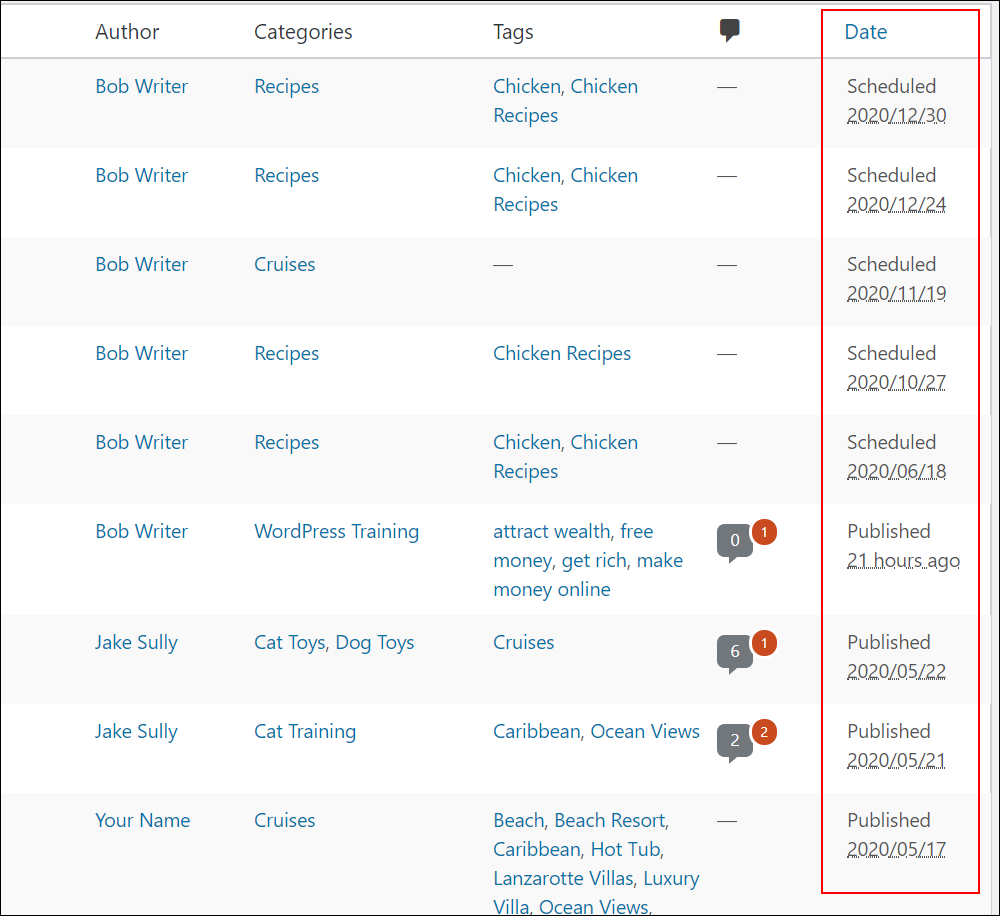
Note that Scheduled posts take priority over Published posts on the list. This allows you to see which posts are coming up next for publishing.
You can bulk edit and/or bulk delete posts in the Table of Posts by ticking/unticking checkboxes in the Posts Title column. This is covered in detail in Part 2 of this tutorial.
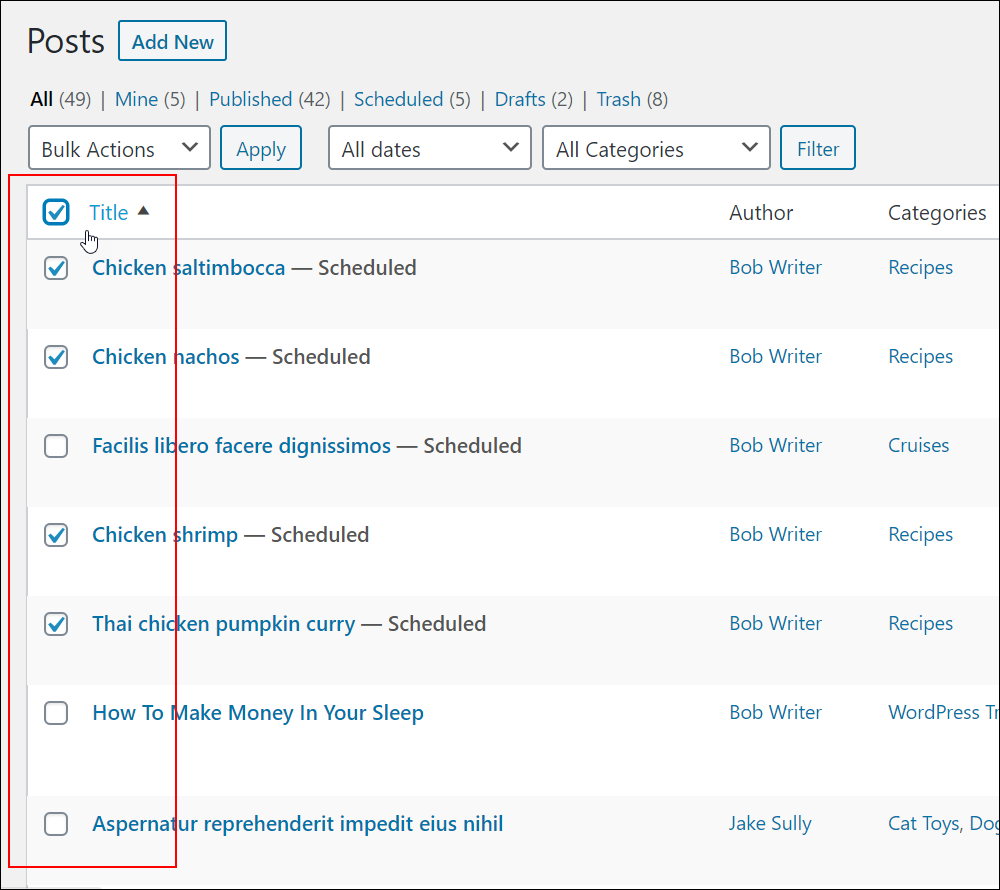
WordPress Table Of Posts – Columns
Post Title Column
Each post title displays in the Title column as a clickable link.
Clicking on a post title lets you edit the post content in the Edit Posts screen.
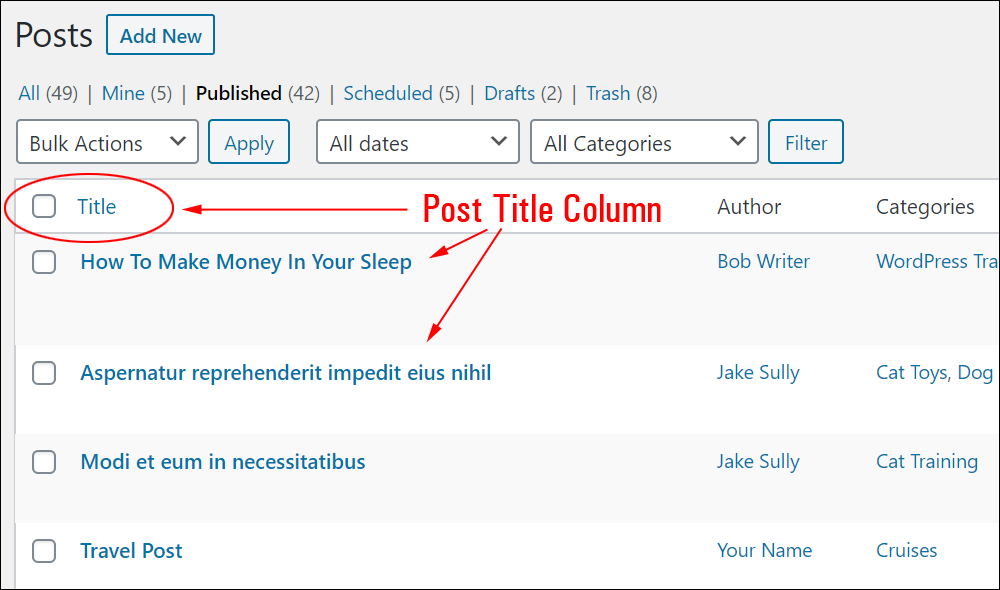
Hover over any row in the list of posts and several menu options will display.
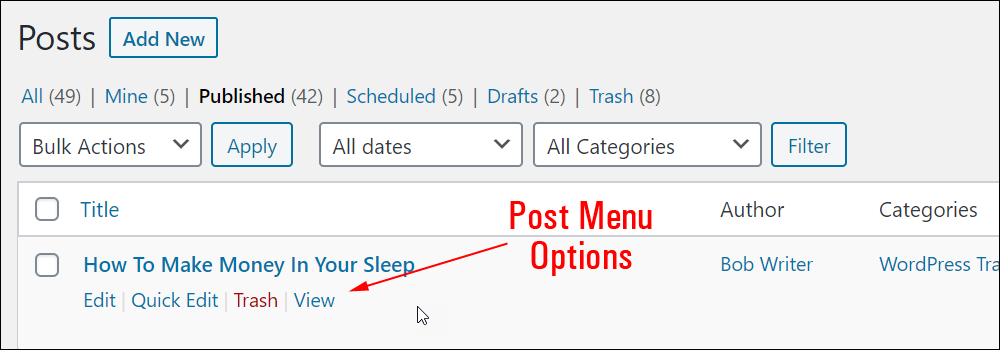
This lets you perform the following post management tasks inside the Table of Posts:
- Edit takes you to the Post Edit screen and content editor. Clicking on the post title itself also brings up the Post Edit screen for that post.
- Quick Edit gives you access to the inline editor where you can quickly edit and update various metadata settings for your post (i.e. you can edit details about your post but not the content). We have written a separate step-by-step tutorial on How to Use the WordPress Quick Edit Feature.
- Trash removes your post from the Table of Posts and places it in the trash. From there, you can permanently delete it.
- Preview/View. The link displayed here depends on the status of your post. If your post status is set to ‘Draft,’ the menu will display a ‘Preview’ link. Clicking on this link will show you what your draft post will look like once it is published. If your post has already been published, the menu will display a ‘View’ link. Clicking on ‘View’ will take you to your site where you can view your live post.
Post status indicators next to the post title let you quickly see if your posts have been saved as Draft, Private, Pending, Sticky Post, Password-Protected, etc.
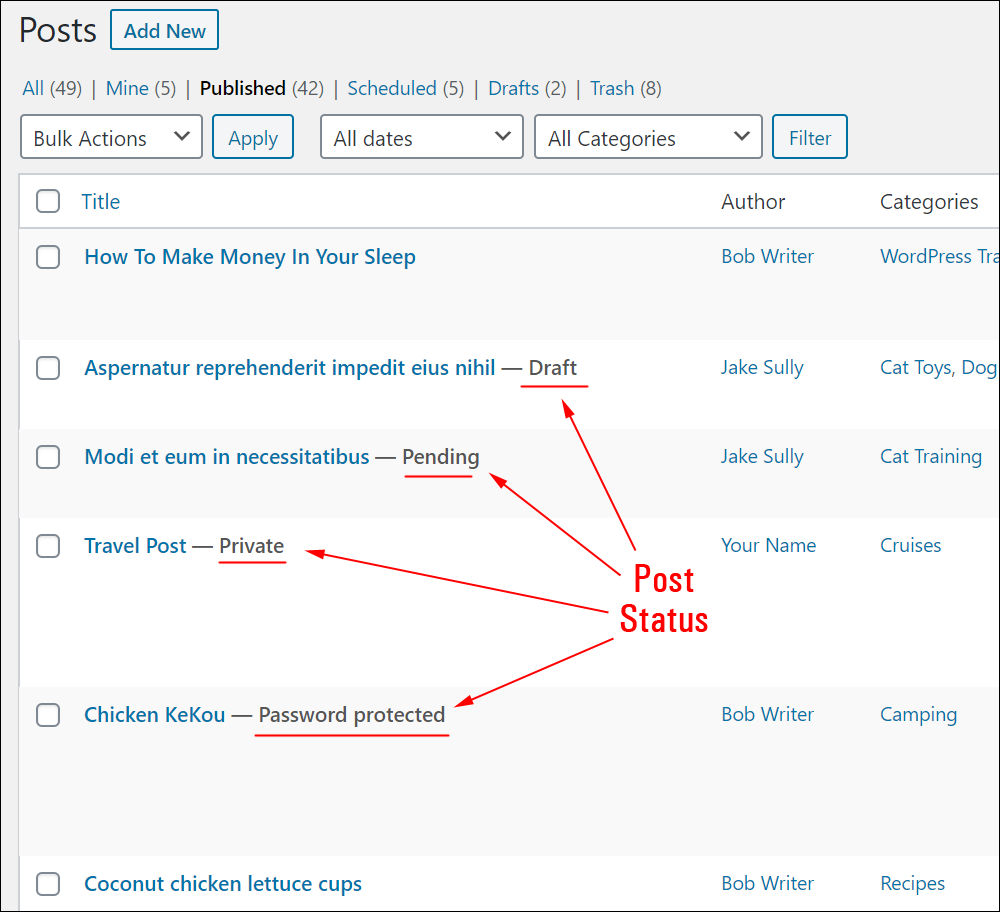
Post Author Column
Posts authors display in the Author column.
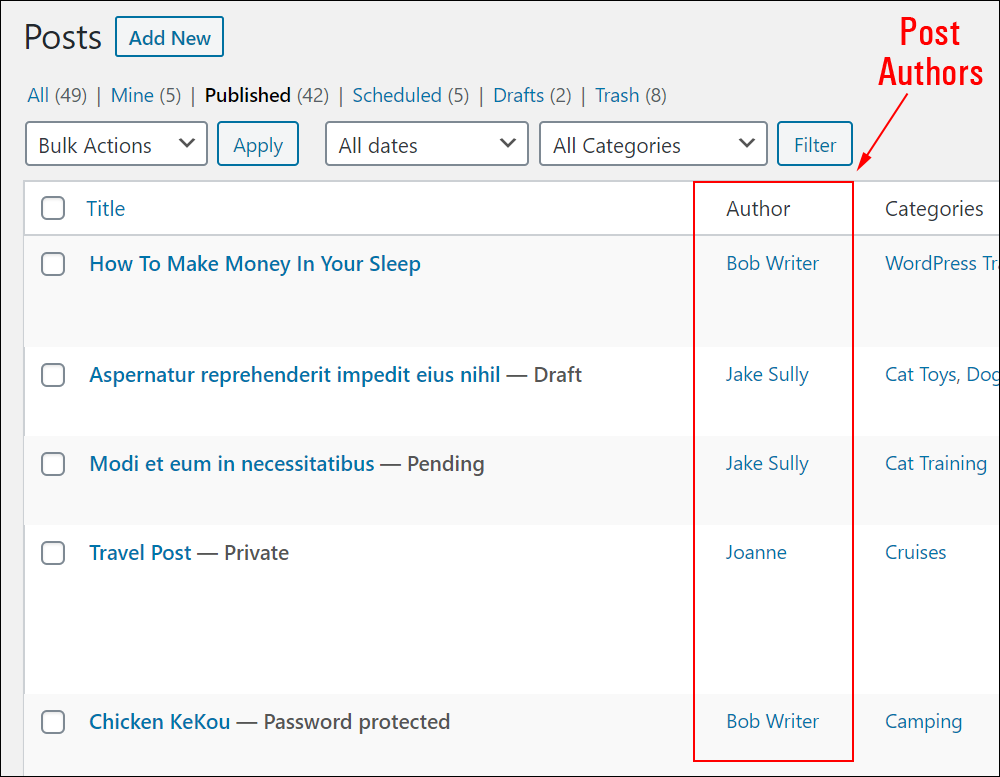
Author links are clickable. If your site allows multiple authors to publish content, click on the author’s name to view all posts published by that author.
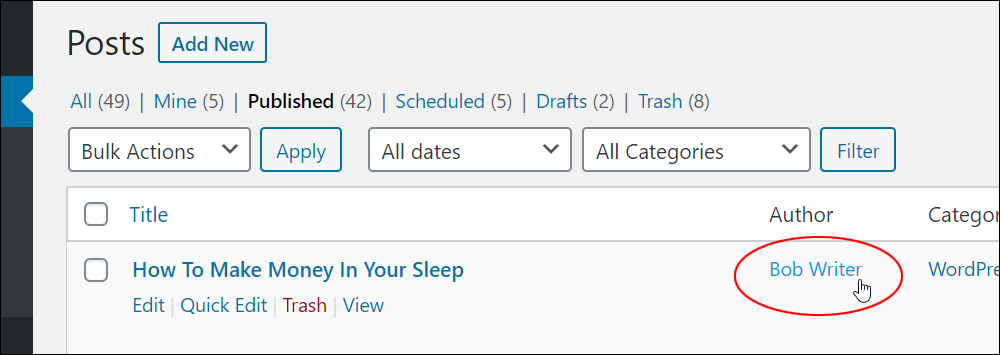
The Table of Posts then filters and displays only a list of posts authored by that user.
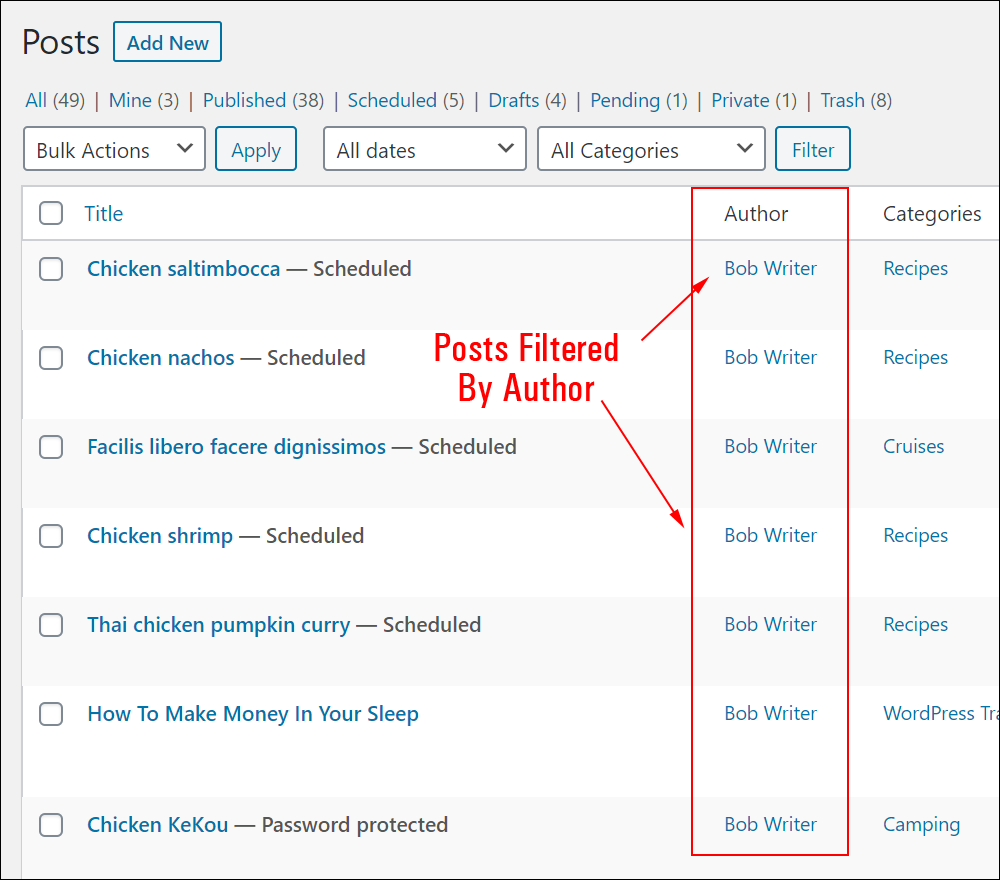
To learn how to assign posts to different authors, see this tutorial: How To Change Post Authors In WordPress
Post Categories Column
This column lets you see all the categories that you have assigned to your posts.
Category links are clickable. Click on a category in this column…
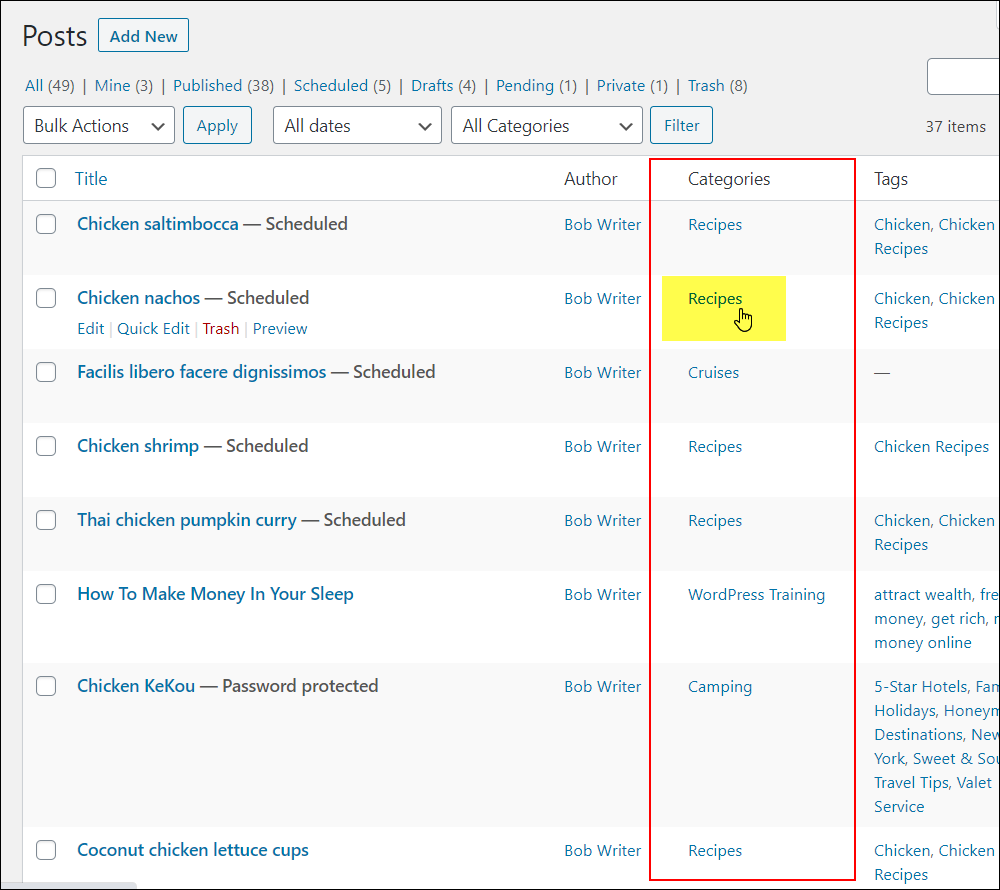
A list of all posts assigned to that category will display in the Table of Posts.
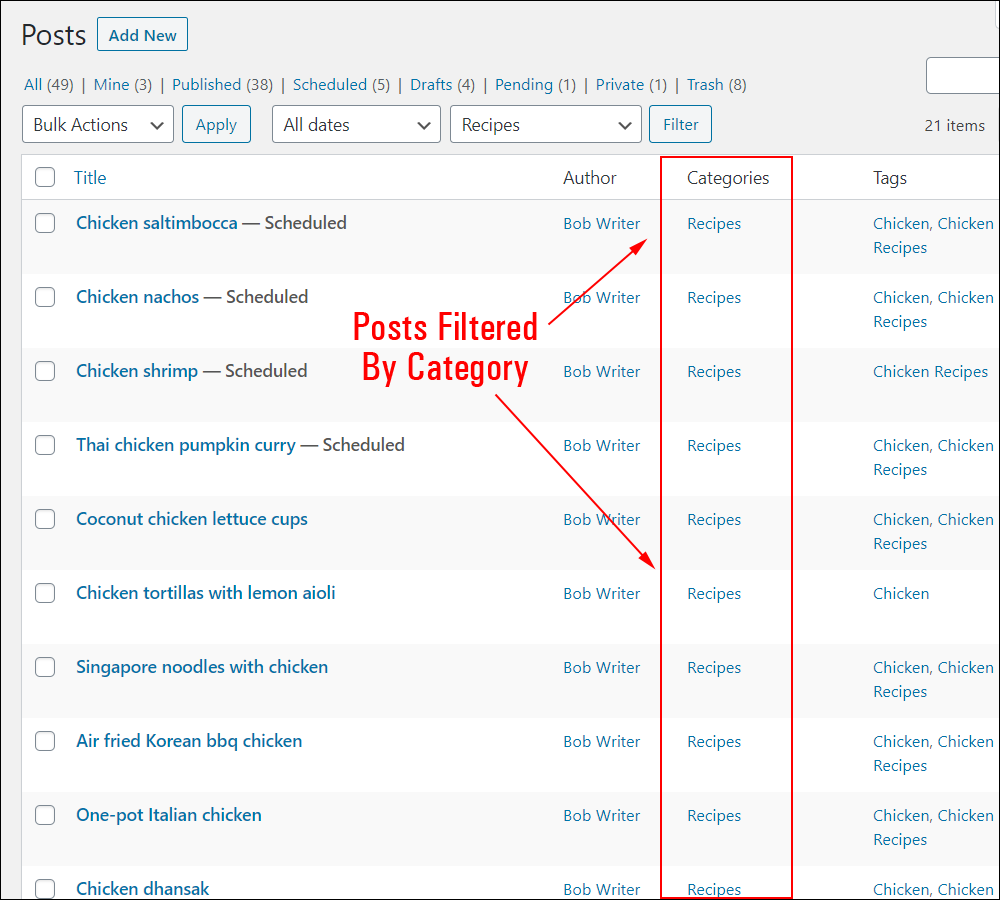
To learn how to use categories in WordPress posts, see this tutorial: How To Use Categories In WordPress
Post Tags Column
This column lets you see all the tags associated with your posts.
Click on any tag in this column…
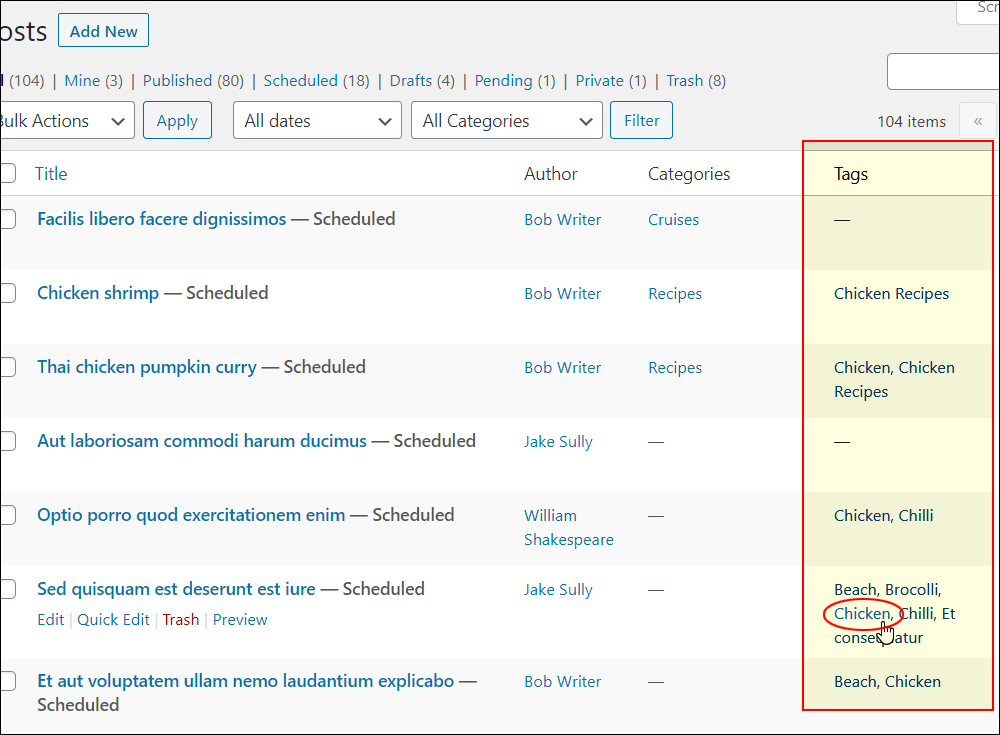
And the Table of Posts returns a list of all posts that include this tag.
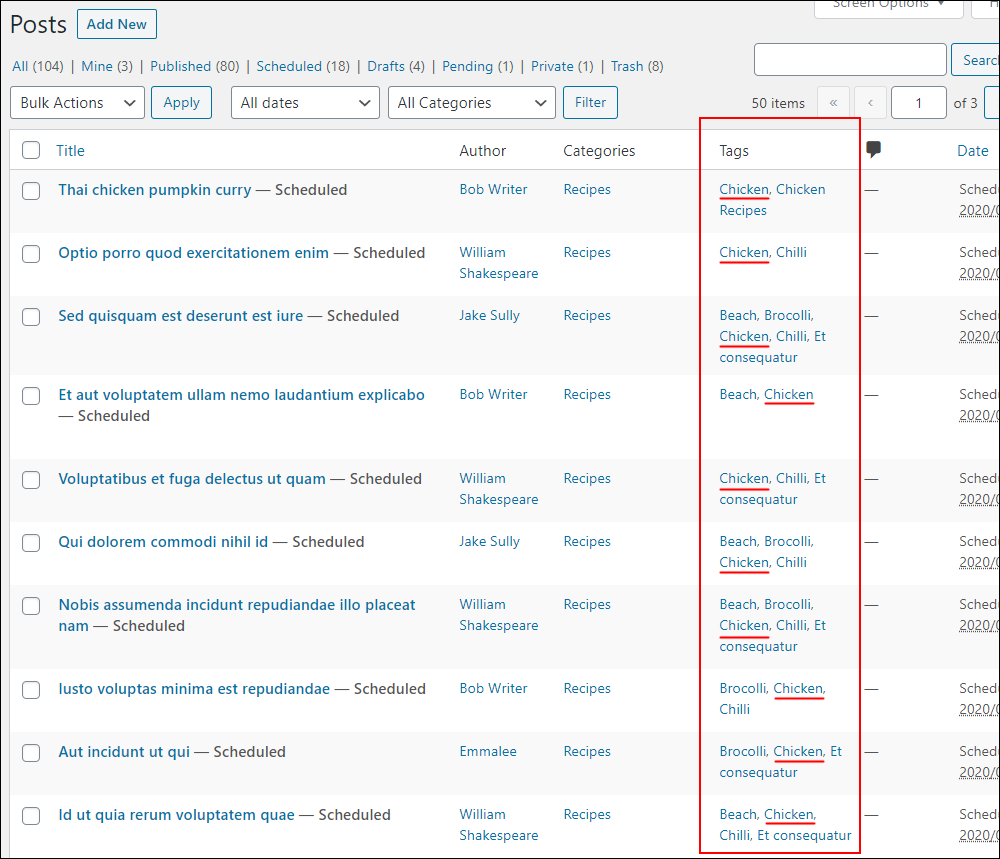
To learn how to use tags in WordPress, see this tutorial: How To Use Tags In WordPress
Post Comments Column
The Post Comments column displays the number of comments left on your posts inside the post’s comment bubble. Note: Your WordPress Discussion settings (Settings > Discussion) must be configured to allow users to leave comments on your posts.
The number of approved comments displays inside the post’s comment bubble.
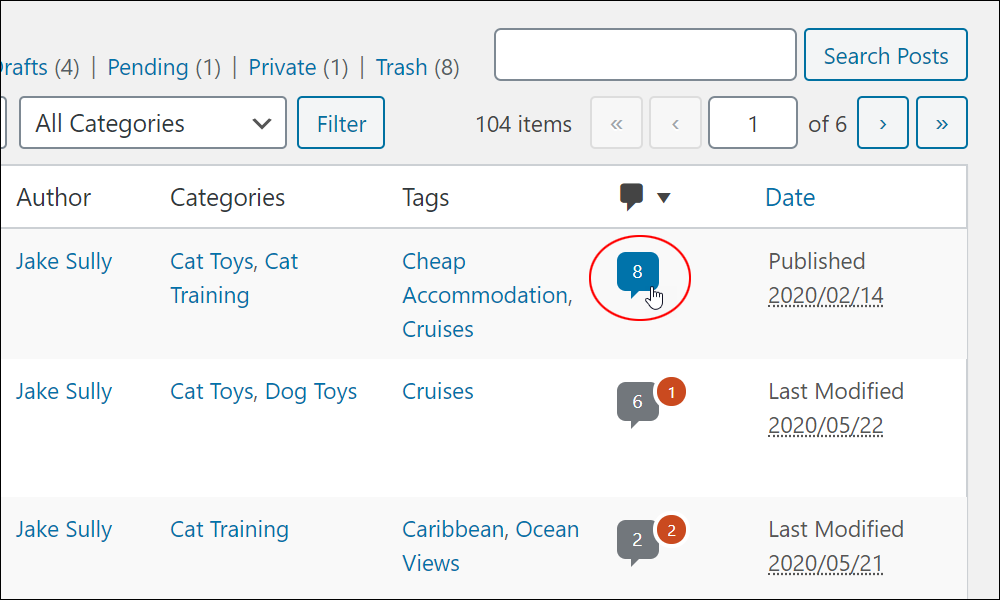
Clicking on the comments bubble will take you to the Comments section screen, where you can approve or disapprove comments left by visitors on your posts.
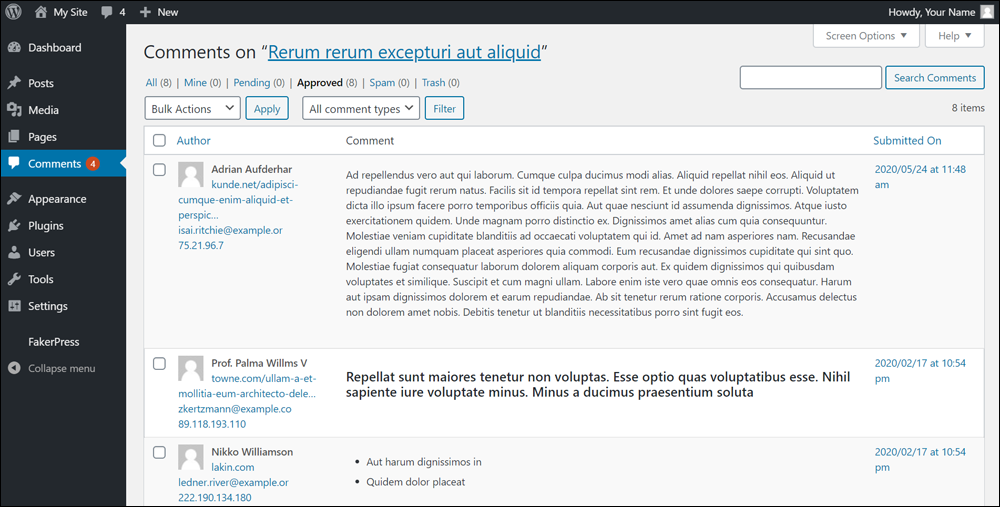
If posts have pending comments (i.e. comments that need approval by an administrator before they can be published), the number of comments awaiting moderation will display next to the comment bubble icon for that post.
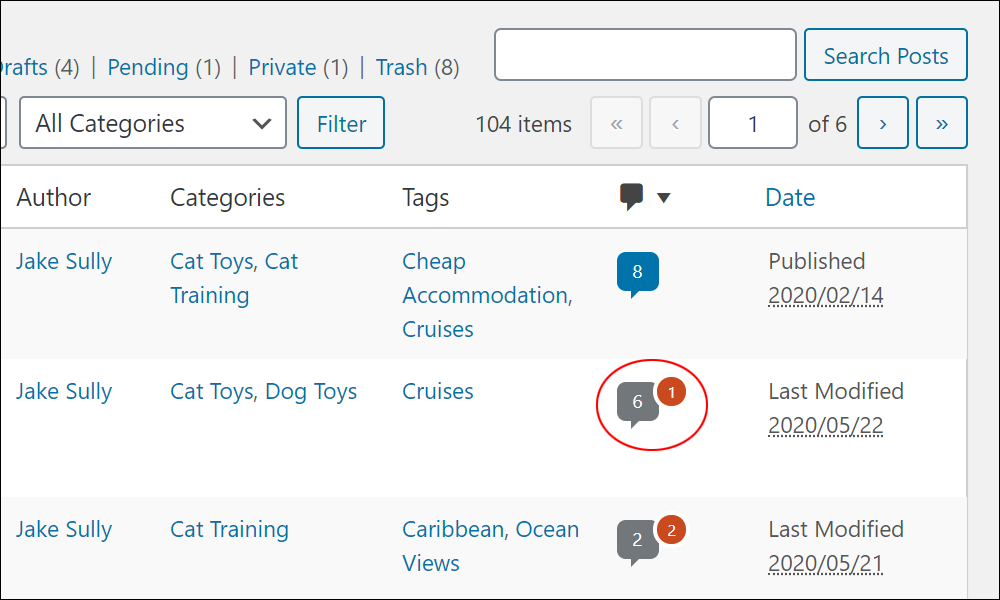
Note: Clicking on the comments bubble will take you to the Comments screen, where you can approve or disapprove comments left by visitors on your posts.
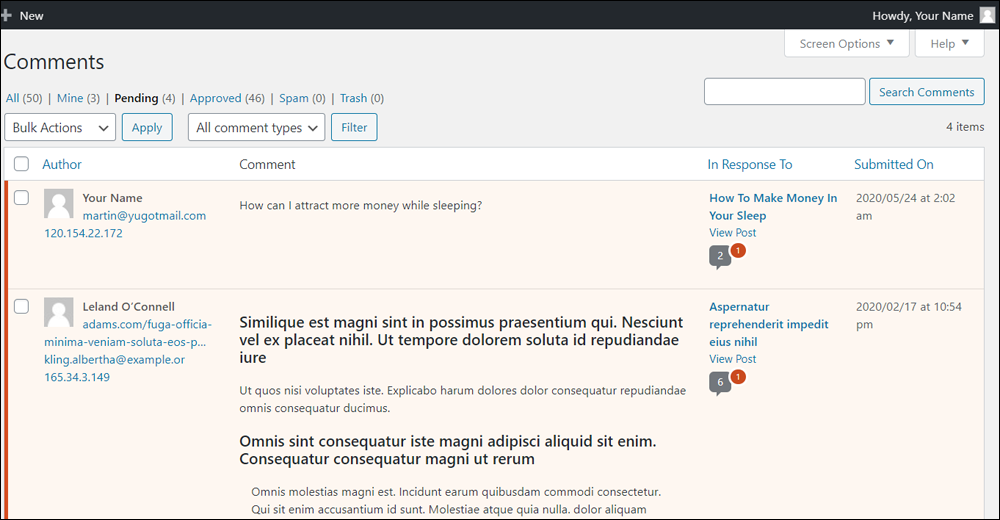
To learn more about moderating comments in WordPress, see this tutorial: How To Manage WordPress Comments
Post Date Column
The Date column shows the dates for each post as follows:
- The Published date of all your published posts,
- The Last Modified date of all unpublished posts (e.g. posts set to ‘draft’ status), and
- The Scheduled date for all posts set to publish later.
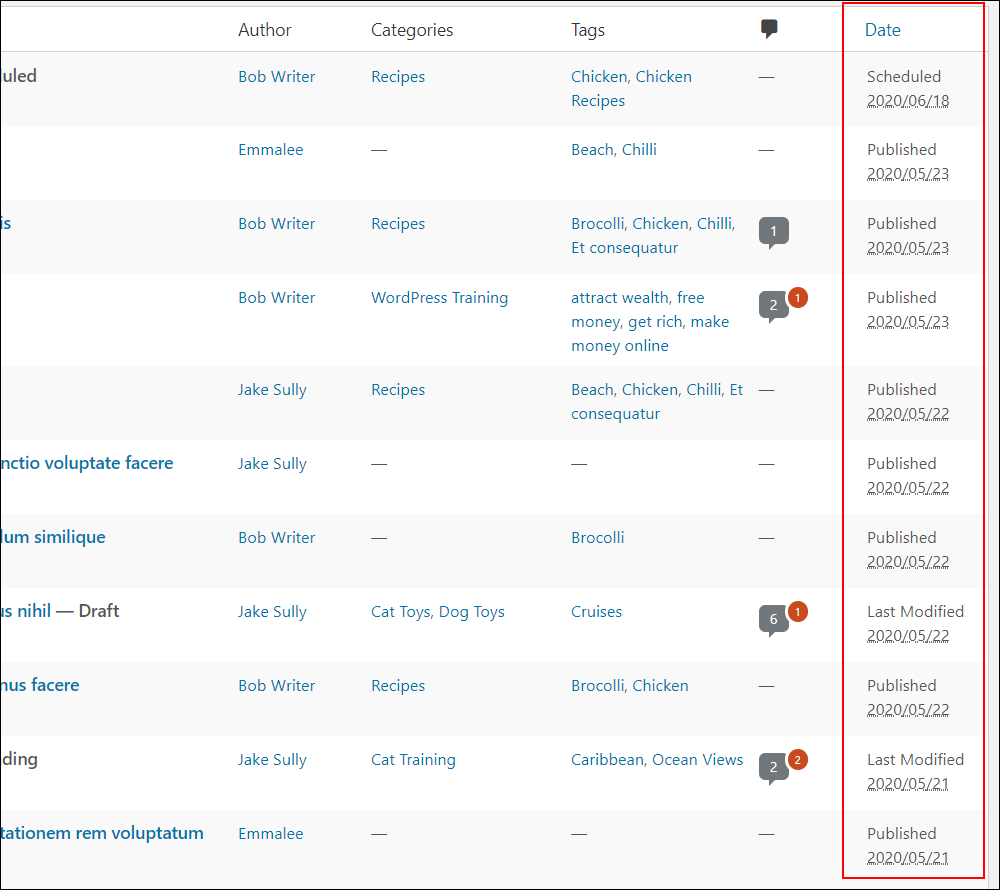
In addition to listing posts using the default ‘List’ view, the Table of Posts can also display your posts in ‘Excerpt’ view.
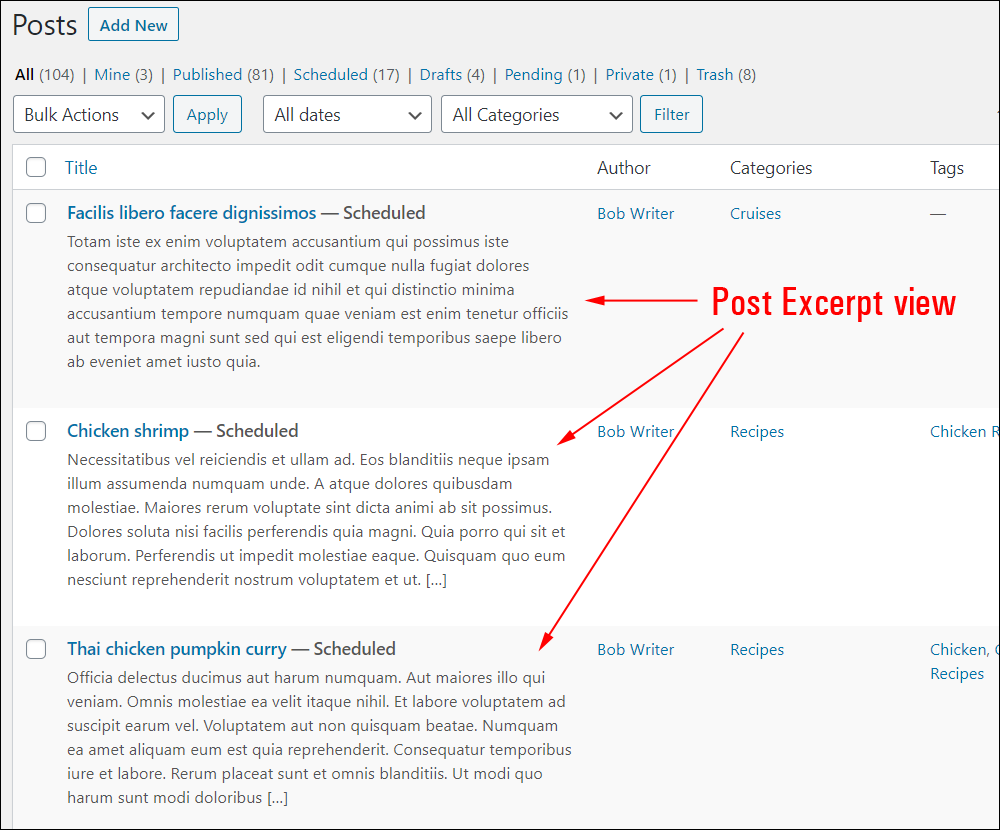
See the section below to learn how to display posts in the Table of Posts in Excerpt view.
WordPress Table of Posts – Screen Options
You can configure various options, such as displaying or hiding columns and view/pagination features in your Table of Posts by clicking on the ‘Screen Options’ tab near the top right-hand corner of your Posts screen.
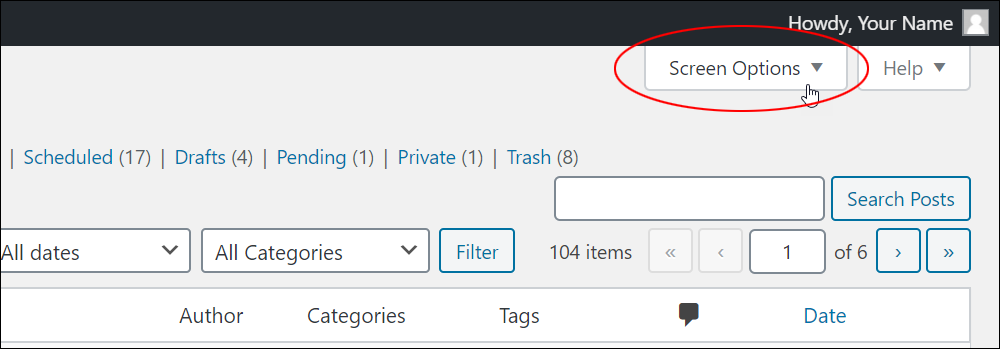
A section will expand at the top of your screen, revealing options for configuring your Table of Posts.
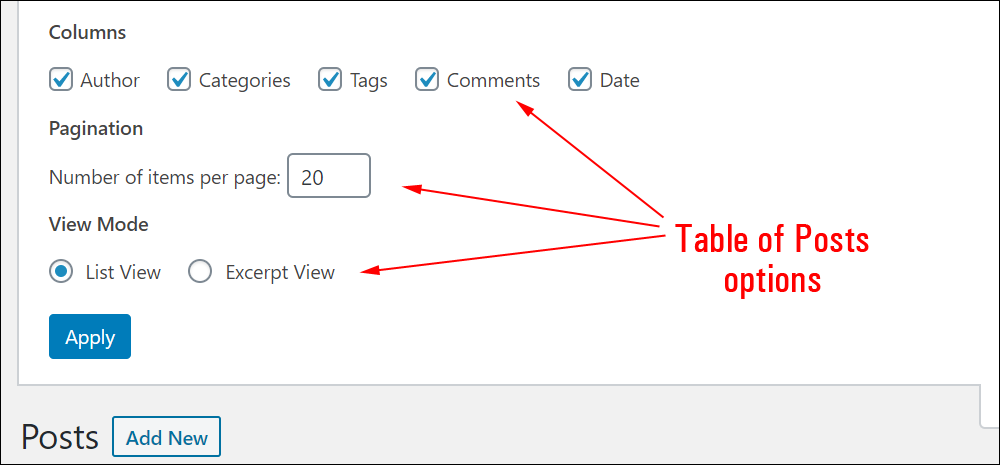
Options are divided into the following sections:
- Columns – In this section, you can enable/disable or display/hide columns in your Table of Posts by ticking/unticking checkboxes.
- Pagination – Enter the number of post entries to display on each page of your Table of Posts. By default, WordPress displays 20 posts per page on your screen.
- View Mode – Select a radio button to specify whether posts should display in List View (default), or Excerpt View.
Remember to click the Apply button to save and update your settings.
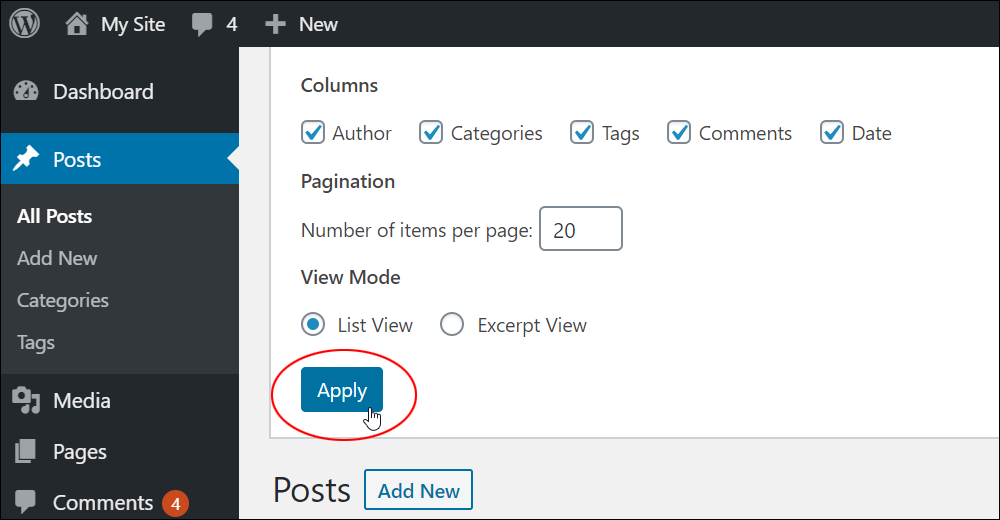
WordPress Table Of Posts – Post Sorting, Searching, And Filtering Menus & Options
WordPress provides options and menu links that let you sort, search, filter, and display selected posts on your Table of Posts.

Let’s go through each of these features.
Filter Posts By Status

Depending on the user role you have been assigned and the status of your posts, you will see different menu links (with the number of posts assigned to that status) in the menu section below the Posts screen page title.
Clicking on the menu links displays the following posts:
- All – All posts from all authors and all post statuses (you must be the site admin to view all posts on your site. Otherwise, you will only see posts that you have permission to view depending on your user role).
- Mine – Only posts that you have authored (or that you have been assigned as the author).
- Published – All posts set to ‘published’ status.
- Scheduled – All posts set to ‘scheduled’ status.
- Draft – All posts set to ‘draft’ status.
- Pending – All posts set to ‘pending’ status.
- Private – All posts set to ‘private’ status.
- Trash – All posts that have been discarded (i.e. set to ‘trash’ status.
Clicking on any of the above links is the easiest way to filter posts by status in the Table of Posts.
Bulk Action Post Management Functions
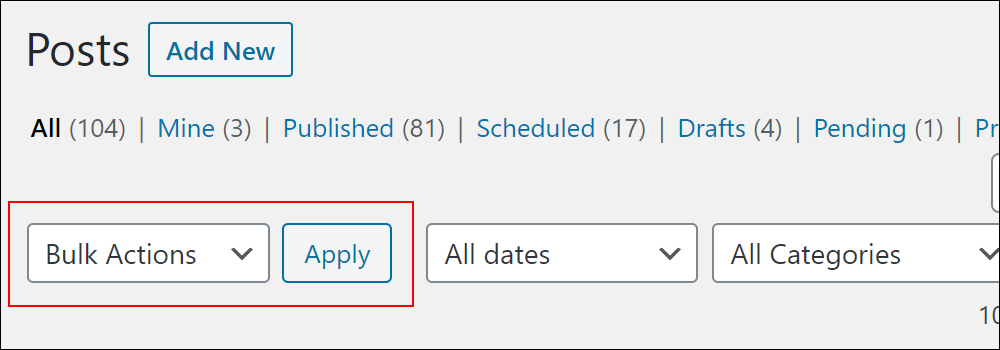
Note: This section is explained in detail in Part 2 of this tutorial.
Post Sorting Features

Below the post status menu filtering section and next to the Bulk Actions dropdown menu and Apply button are two additional post filtering options:
Filter Posts By Date – All Dates/Selected Months
The WordPress Table of Posts lets you filter posts by dates. Show all dates is selected by default and all your posts are listed.
To display only posts that have been time-stamped as being published or scheduled to publish within a particular date range, select the date period from the All dates drop-down menu and click the Filter button.
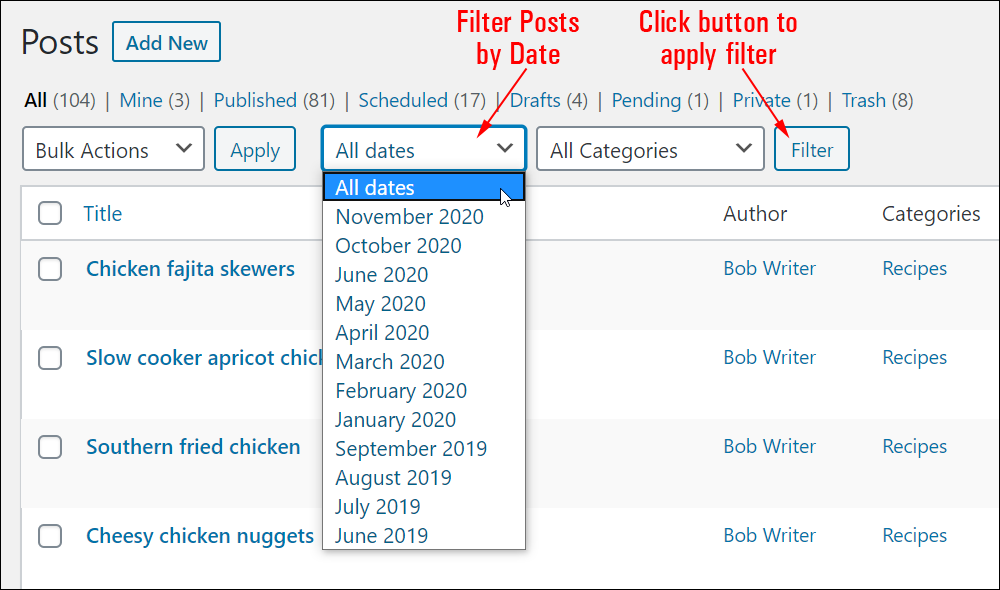
Filter Posts By Category – All Categories/Selected Categories
The Table of Posts also lets you filter posts by category. By default, All Categories is selected, and all posts are displayed.
To display only posts assigned to a particular category, select the category from the All Categories drop-down menu and click the Filter button.
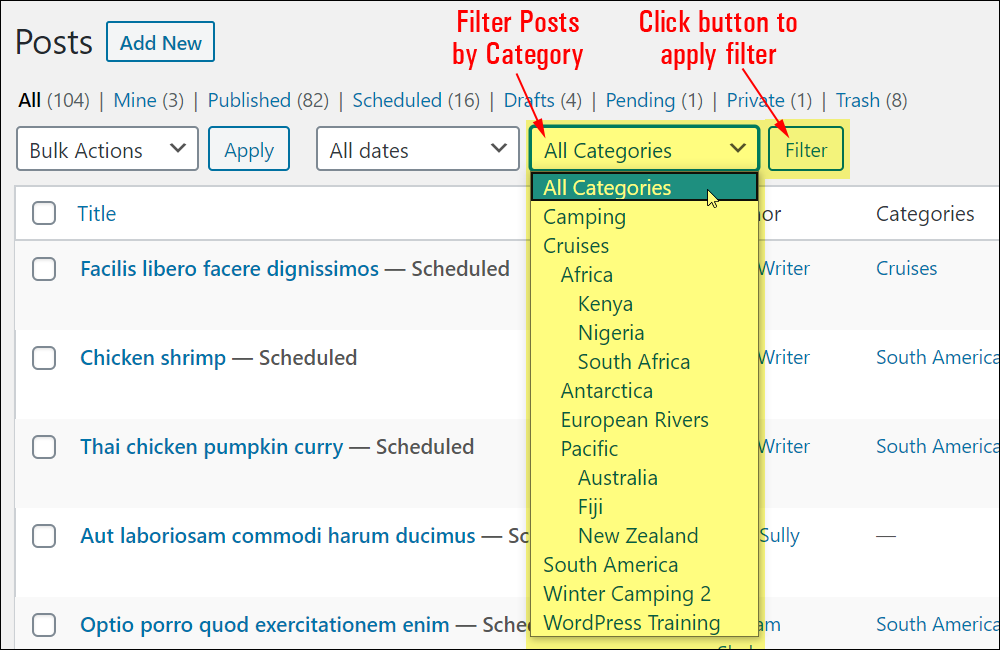
Search Posts Feature
If your site has many posts spanning across several Post screen pages, you can use the Search Posts feature to filter and display only posts containing the terms entered into the search field.
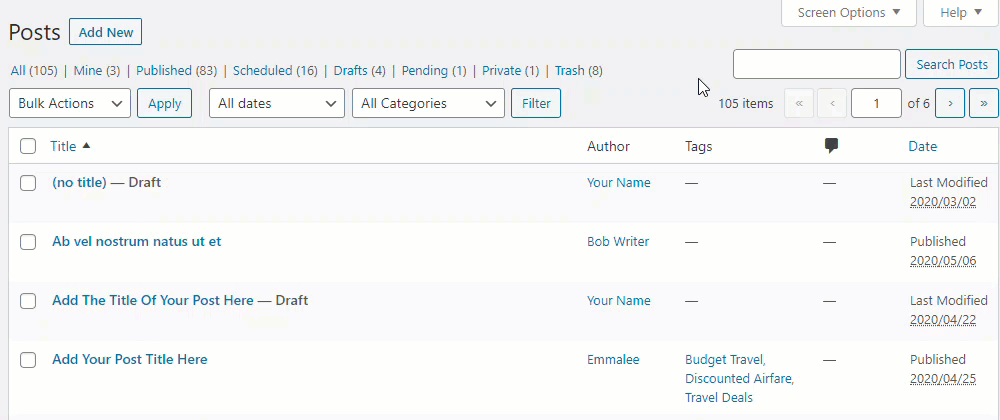
To clear the search filter results and restore the full list of posts in the Table of Posts, delete the search term and click the Search Posts button again (see image above), or click the All menu link in the Post Status menu section.
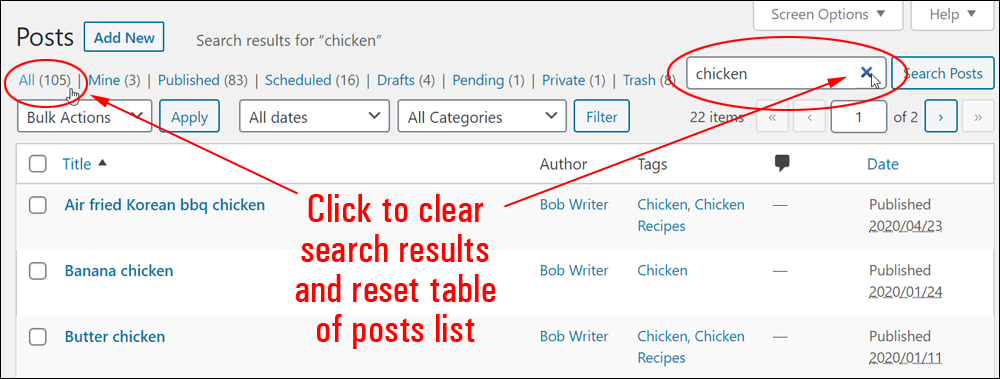
The search filter results will be cleared and a list of all posts in the Table of Posts will display once again.

Next Step…
Now that you have a better understanding of what all the different sections and features of the Table of Posts do and how they work, the next step is to learn how to edit and delete your posts in WordPress.
This is the end of part 1 of this tutorial.
To continue this tutorial, click here: How To Edit And Delete Posts In WordPress – Part 2
Related WordPress Tutorials
To get the most benefit from using the WordPress Table of Posts and improve your skills as a WordPress user, we recommend going through all of the tutorials below:
- WordPress Posts vs WordPress Pages
- How To Create A Post In WordPress – Part 1
- How To Create A Post In WordPress – Part 2
- How To Use Categories In WordPress
- How To Use Tags In WordPress
- How To Use The WordPress Classic Editor
- How To Use The WordPress Quick Edit Feature
- How To Change Post Authors In WordPress
- How To Schedule Posts In WordPress
- How To Make WordPress Posts Sticky
- How To Protect Your Content In WordPress Posts & Pages
- How To Use The WordPress Block Editor
- How To Manage WordPress Users
- How To Manage Comments In WordPress
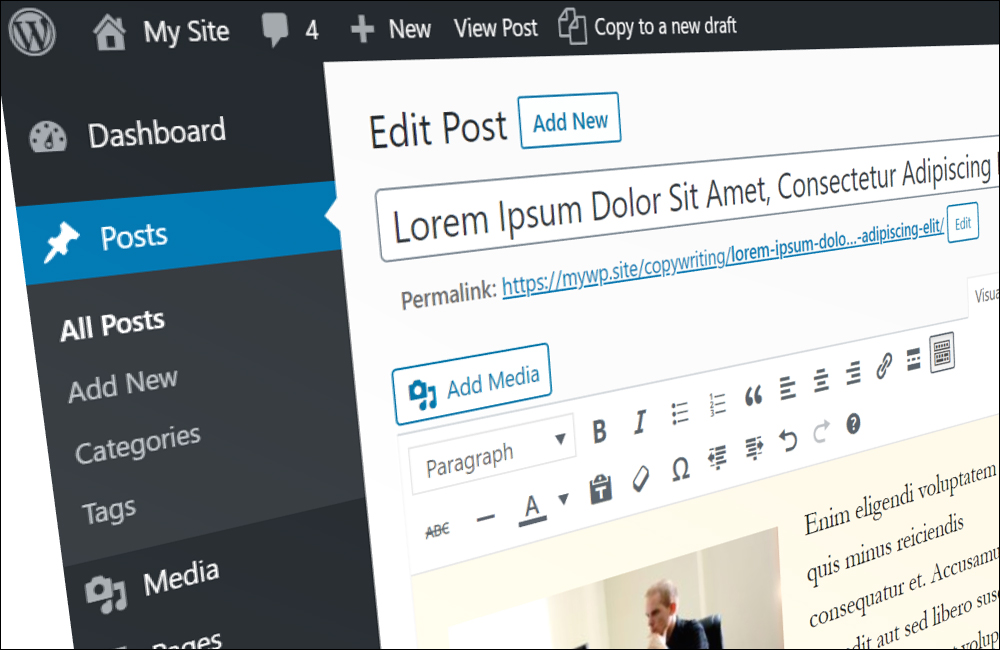
***
Updated: July 5th, 2024
